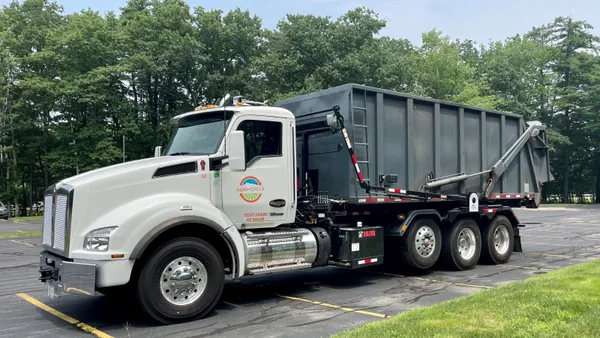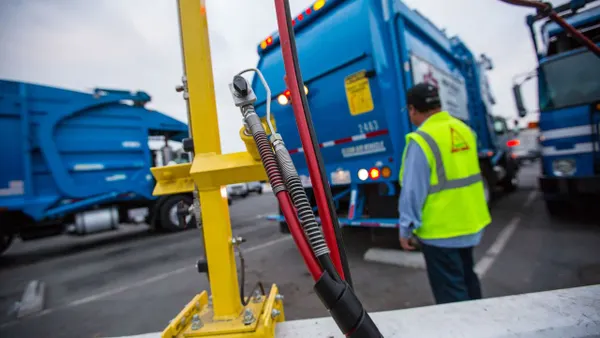Dive Brief:
- Compost facilities in the Twin Cities region are struggling with capacity and material management, as reported by the Star Tribune. Data from the Minnesota Pollution Control Agency shows that food waste being composted in the region has nearly quadrupled since 2010.
- Most compostable material in the region goes to just two facilities in the cities of Shakopee and Rosemount. Specialized Environmental Technologies (SET), the facility in Rosemount, is working to double its capacity for food waste, but Kevin Nordby, a co-owner of the company, appears pessimistic. "That capacity is basically going to be full as soon as I finish the construction," Nordby told the Star Tribune.
- Nora Goldstein, editor of BioCycle, told Waste Dive these kinds of capacity challenges can happen depending on how well cities or regions prepare their organics infrastructure before implementing diversion goals. "But it's not necessarily like you need to step in and build 500-ton-a-day facilities," she said. "It's really looking at the capabilities and the infrastructure that you have. That's where it's this combination of anaerobic digestion and composting, in cities."
Dive Insight:
Setting up large composting facilities carries with it challenges, especially given the high initial cost involved. The difficulties only increase when considering permitting requirements, the need to construct treatment ponds and neighbors that may adopt a "not-in-my-backyard" attitude.
Further difficulties could abound for Hennepin County, home to Minneapolis. County officials recently approved a plan to require many cities and businesses to recycle food waste by 2022, but there may not be a viable location in the county for a new facility. If the requirement for food recycling goes through, it could place further strain on already stressed facilities — especially given Minnesota's 75% recycling goal.
The region has options, however. Goldstein said that other regions that have made bold steps in recycling organic waste have seen success. Massachusetts, for example, has a disposal ban on organic material.
"What's been interesting to see, [the state] never really hit a crunch," she said. "It's a diverse enough composting infrastructure. Diverse enough, and then development of the capacity for anaerobic digestion, it never came to be that there was a big crunch."
She said the state really "went for it," when it came to implementing organics diversion, but also spent enough time preparing infrastructure in the state to handle all the organic waste. Other states are following suit in expanding their composting capacity. Ohio, for example, has over 400 facilities for compost, according to the most recent BioCycle survey.
While it's easy to envision an organics program where all food waste is sent to one or two facilities with high capacity, that does not have to be the case. A robust organics recycling infrastructure can be comprised of smaller facilities, both for anaerobic digestion and for composting. Goldstein also highlighted the importance of considering slurrying organic waste for processing at wastewater treatment plants and considering end-markets.
"Really integrating into stormwater management, for the compost that is, integrating the biogas into vehicle fuel, so they're helping to build and embrace the market side of it, so that project developers are able to put the numbers together more easily," Goldstein said.









